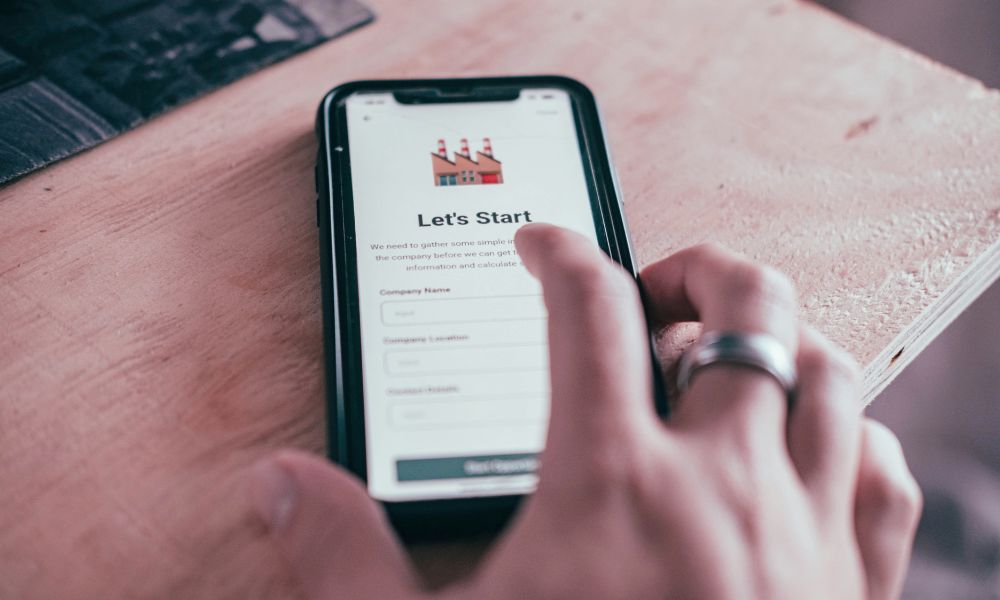Influencer onboarding is one of the most critical steps in building successful brand-creator partnerships. It’s where expectations are aligned, deliverables are clarified, and creators are equipped with everything they need to represent your brand confidently and correctly.
💡Before onboarding begins, you first need to find and hire social media influencers who align with your campaign goals.
Without a proper onboarding process, even the best outreach efforts can fall flat, leading to missed deadlines, inconsistent messaging, or off-brand content. Whether you’re working with one creator or launching a multi-influencer campaign, a clear onboarding system helps set the tone for a smooth and professional collaboration.
In this guide, we’ll walk through the full influencer onboarding process, from what to include in your brief to common mistakes to avoid. You’ll also get a checklist, best practices, and a template you can adapt to your own campaigns.

What Is Influencer Onboarding?
Influencer onboarding is the process of introducing a creator to your brand, campaign, expectations, and tools after they’ve agreed to collaborate. It’s a structured way to ensure influencers have all the information they need to create content that aligns with your goals and accurately represents your brand.
While influencer outreach is about discovering and securing partnerships, typically through an Influencer Discovery Tool, onboarding starts once the agreement is in place. It’s the bridge between “yes” and “go live,” turning a verbal commitment into a well-executed campaign.
Onboarding typically includes campaign details, brand guidelines, timelines, messaging rules, deliverables, and payment terms. It may also cover compliance (such as FTC disclosures), content rights, and communication channels.
Done right, onboarding:
- Reduces confusion or revision rounds
- Strengthens the brand-influencer relationship
- Increases content quality and on-time delivery
- Sets the tone for long-term partnerships
In short, influencer onboarding helps brands move from manual coordination to repeatable, professional workflows that scale.
When Does Influencer Onboarding Begin?
Influencer onboarding begins after initial outreach and agreement to collaborate, but before any content is created or published. It’s the stage where verbal or informal agreements are formalized, expectations are clarified, and the influencer is fully equipped to move forward.
In some cases, onboarding happens before the contract is signed, especially if you’re sending a detailed brief or proposal that includes terms, deliverables, and timelines. In other cases, onboarding begins immediately after contract acceptance, particularly when using influencer platforms that automate the workflow.
Here’s a typical influencer workflow timeline:
1. Discovery & Outreach → 2. Agreement & Contract → 3. Onboarding → 4. Briefing & Content Production → 5. Review & Execution
Starting onboarding early helps prevent misalignment and gives creators enough time to ask questions, plan content, and deliver it according to your standards.

Influencer Onboarding Checklist: What to Cover
A smooth onboarding process sets the foundation for a successful campaign. Here’s a checklist of what to include when onboarding influencers, covering everything from brand messaging to payment logistics.
1. Brand Introduction & Key Messaging
Start by helping influencers understand who you are and what your brand stands for.
- Brief company intro (who you serve, what makes you different)
- Product or service overview, especially what they’ll be promoting
- Brand mission and tone (e.g., playful, professional, bold)
- Key phrases, product features, or taglines to highlight
💡For a detailed look at structuring your creative brief, explore our influencer brief guide with templates and examples.
2. Campaign Overview
Give influencers the big picture so they know what they’re contributing to.
- Campaign name and objective (e.g., product launch, seasonal promo)
- Platforms and content types (Reels, TikToks, Stories, etc.)
- Start and end dates
- KPIs if relevant (reach, UGC, conversions)
3. Deliverables & Deadlines
Be specific about what you expect and when you need it.
- Number of posts or videos
- Posting schedule or deadline
- Pre-submission requirements (e.g., review drafts, final edits)
- File formats or specs if content is to be reused elsewhere
4. Content Guidelines & Visual Style
Provide clear creative direction to ensure brand consistency.
- Do’s and don’ts for messaging, language, and themes
- Visual branding notes (colors, product placement, logo usage)
- Required hashtags, tags, and links
- Past examples or inspiration boards, if available
5. FTC Disclosure Requirements
Clarify compliance expectations to protect both your brand and the influencer.
- Disclosure language (e.g., must include #ad or #sponsored)
- Platform-specific rules (e.g., TikTok’s branded content toggle)
- Guidelines around audio claims, testimonials, or health disclaimers
- Link to FTC or ASA guidelines for reference if needed
6. Payment Terms & Payout Methods
Avoid confusion by stating exactly how payment will work.
- Compensation type: flat fee, gifted product, commission-based, or hybrid
- Milestone payments or post-campaign payout
- Method: PayPal, bank transfer, payment platform
- Bonus triggers or late penalties, if applicable
💡Automate payouts and minimize manual admin with an Influencer Payment Platform that handles global payments and compliance.
7. Contact Points & Communication Channels
Make it clear who the influencer should contact, and for what.
- Campaign manager or brand rep for content questions
- Finance contact for invoices or payments
- Legal/compliance contact (if applicable)
- Preferred communication channel (email, Slack, platform messaging)

Influencer Onboarding Best Practices
Once you’ve covered the basics, refining your onboarding process can improve creator satisfaction and campaign consistency. Below are best practices that help you scale without sacrificing quality.
1. Use a Standardized Brief Template
A consistent briefing format saves time and minimizes confusion. By using a standardized template for all influencer campaigns, you reduce back-and-forth emails and ensure nothing critical is missed.
- Include key sections like deliverables, messaging, content examples, and brand tone
- Keep it skimmable with bullet points and visuals
- Maintain version control by using shared folders or cloud-based docs
2. Provide Examples & Creative Inspiration
Even experienced influencers appreciate guidance. Sharing visual examples, past campaign results, or mood boards gives them a creative starting point and helps align their content with your expectations.
- Include screenshots of past high-performing content
- Add inspiration from similar campaigns or competitors
- Clarify what you like and don’t like visually
3. Automate Where Possible
Manual onboarding doesn’t scale. Use influencer platforms or campaign management tools to streamline repetitive steps like:
- Sending welcome packets or briefs
- Delivering contract templates and NDAs
- Tracking acknowledgment of brand guidelines
- Scheduling automatic reminders and deadlines
Automation reduces friction, saves your team hours, and ensures consistent onboarding for every creator.
💡Explore top influencer collaboration platforms that include built-in onboarding tools, briefs, and performance tracking.
4. Keep the Experience Personal
While automation is helpful, a generic experience can make influencers feel like just another number. Personalized onboarding builds trust and increases motivation.
- Use their first name in messages and briefs
- Acknowledge past collaborations or recent content
- Include a short welcome video or personalized message from your team
The more connected an influencer feels to your brand, the more likely they are to deliver thoughtful, authentic content.
Common Mistakes to Avoid During Onboarding
Even with good intentions, influencer onboarding can fall short if key details are missing or if the process is overwhelming. Here are common mistakes brands make during onboarding, and how to avoid them.
Overloading with Too Much Info Upfront: Providing every detail of your brand, product, and campaign in one long email or PDF can lead to confusion or disengagement.
✅ Solution: Keep briefs focused and actionable. Prioritize what creators need to succeed and offer additional resources as optional, not required.
Not Setting Clear Deliverables: If deliverables aren’t defined precisely, creators may misinterpret what’s expected, leading to content revisions or delays.
✅ Solution: Be specific about post type, quantity, format, deadlines, and where the content will appear.
💡Make sure your onboarding includes a clear agreement. Here’s a full guide on writing a social media influencer contract with key terms and a downloadable template.
Being Vague on Usage Rights or Compensation: When compensation terms or usage rights are unclear, misunderstandings can occur, especially regarding paid ads, UGC reuse, or exclusivity.
✅ Solution: Spell out payment structure, timeline, method, and exactly how content can be used (and for how long).
💡For help budgeting your influencer program, check out this influencer marketing cost breakdown with pricing models and trends.
Failing to Outline Disclosure/Compliance Expectations: If influencers skip proper FTC disclosures, it can result in legal or reputational risk for both sides.
✅ Solution: Clearly state what disclosures are required (e.g., #ad, branded content toggle) and link to the relevant compliance guidelines.

Sample Influencer Onboarding Template or Brief
To make your onboarding process faster and more consistent, it’s useful to work from a structured template. Below is a sample influencer onboarding brief that covers the most essential fields. You can adapt this format for different campaign types, influencer tiers, or platforms.
If you’re managing multiple campaigns, using an Influencer Hiring Platform helps you scale your onboarding with pre-vetted creators and campaign-ready workflows.
🧾 Influencer Onboarding Brief: Sample Template
📌 Campaign Name:
Summer Glow Launch Campaign
📅 Campaign Dates:
September 1–30, 2025
📦 Product/Offer:
GlowSkin Co. Vitamin C Serum (new formula)
🎯 Campaign Goal:
Drive awareness and sales through Instagram and TikTok content featuring personal product use and skincare routine tips.
1. Deliverables
- 1 Instagram Reel (30–60 seconds)
- 1 TikTok video (45–60 seconds)
- 1 Instagram Story (3 frames) with swipe-up link
Posting Window: September 5–15
Hashtags: #GlowUpWithGlowSkin #VitaminCBoost
Tags: @glowskinco on all platforms
Link: [Insert tracked product URL or affiliate link here]
2. Tone & Creative Direction
- Natural, authentic, and skincare-educational
- Show real usage, not just product placement
- Avoid overly scripted or high-production content
- Must mention results after use (hydration, brightness, etc.)
- Content should be shot in good lighting (natural preferred)
3. Visual Examples / Inspiratio
- [Link to visual mood board or sample posts]
- [Link to past influencer post that performed well]
4. Compensation & Payment Terms
- Flat fee: $800 USD
- Payment via PayPal within 7 days after the content is live
- Bonus: $100 if TikTok exceeds 25K views
5. Disclosure Requirements
- Must include #ad or #sponsored in captions
- Use Instagram’s branded content tag and TikTok’s branded toggle
- Avoid misleading or unverifiable claims
6. Content Approval Process
- Please submit drafts via email or the platform by September 3
- 1 round of revisions if needed
- Final content must be approved before posting
7. Contact Info
- Content & Briefing: Emma Lee – emma@glowskinco.com
- Payments: Alex Rivera – finance@glowskinco.com
Manage Briefs, Payments & Onboarding in One Place with Hypefy
Handling influencer onboarding manually, across emails, spreadsheets, and separate payment systems, slows your team down and increases the risk of errors. Hypefy brings all of your onboarding tasks into one streamlined platform.
With Hypefy, you can:
- Upload and send prebuilt onboarding briefs with content examples, timelines, and brand rules
- Assign custom deliverables and due dates for each influencer
- Automate contract delivery and e-signatures
- Manage influencer payments securely and compliantly
- Track task progress and campaign readiness in real time
- Centralize communication to avoid scattered messages and lost feedback
The result? Faster onboarding, fewer revisions, and more consistent campaigns, whether you’re managing one creator or one hundred.
Frequently Asked Questions (FAQs) About Influencer Onboarding
1. How long does influencer onboarding take?
The onboarding process typically takes anywhere from 2 to 5 days, depending on the complexity of the campaign and how quickly the influencer responds. For simple product gifting collaborations, onboarding might be completed within a day. Larger campaigns involving contracts, multiple deliverables, or usage rights require more time to align on details and approvals.
2. What should be included in an influencer welcome kit?
A strong welcome kit should include:
- A brief brand introduction and mission
- Campaign overview and goals
- Deliverables and deadlines
- Visual guidelines and creative examples
- FTC disclosure requirements
- Payment terms and contact info
Optionally, you can include past campaign inspiration, FAQs, and a personal welcome note to make the experience more engaging.
3. How do you keep influencers engaged after onboarding?
Ongoing communication is key. After onboarding:
- Check in regularly without micromanaging
- Offer feedback on content drafts or performance
- Celebrate their results (e.g., sharing their post on your brand page)
- Stay transparent about future opportunities
- Use tools like Hypefy to centralize messages, briefs, and updates so nothing gets missed
Keeping the relationship warm post-onboarding encourages repeat collaborations and helps build lasting partnerships.

To Wrap Up: Make Onboarding Part of the Creator Experience
Influencer onboarding isn’t just another step in your workflow, it’s the foundation for every great collaboration. When done right, it sets expectations, builds trust, and empowers creators to deliver high-quality content that reflects your brand’s voice and goals.
More importantly, onboarding is your first real opportunity to show influencers that they’re valued, respected, and supported. That’s what lays the groundwork for long-term loyalty, consistent results, and better performance across every campaign.
Whether you’re managing a handful of partnerships or scaling to hundreds, making onboarding seamless, efficient, and personal will help you reduce friction, avoid delays, and build better relationships from day one.



